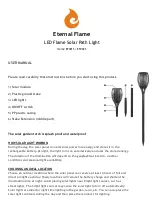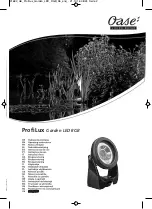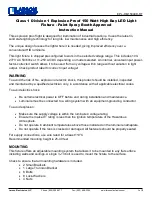
Specification sheet UHP Replacement Lamps
Information in this document is subject to change without notice.
Document#: PHI/378-May.28-2008
Page 3 of 3
The front glass of the lamp should not make direct contact with metal. Also direct airflow towards
the front glass should be avoided.
Fast switching cycles will reduce lamp life (e.g. 10min on 10min off).
4. PROCEDURE FOR DISPOSAL OF LAMPS
If lamps are broken, ventilate area where breakage occurred. A mercury vacuum
cleaner or other suitable means should be used to clean up to avoid dust and mercury
vapour generation. Take usual precautions for collection of broken glass. Place materials
in closed containers to avoid generating dust and mercury vapour.
Waste Disposal Method
.
It is the responsibility of the waste generator to ensure proper
classification of waste products
. At the end of rated life, when this lamp is removed from service,
please dispose it in accordance with local law regulations toxic waste. (UHP lamps are stamped with
Hg mark, according to the State of Vermont Labeling Law V.S.A., Chapter 159; and a wheeled crossed
out dustbin, according European WEEE Directive 2002/96/EC).
Philips encourages recycling of its products by qualified recyclers.
5. ENVIRONMENTAL LAWS
EU
At end of service life, UHP Lamps should be treated as chemical waste (in view of mercury content),
and be disposed of in compliance with national regulations/law.
USA
To comply in accordance with the Law of Vermont, that obliges the visible notification on a lamp in
case it contains mercury, a Hg logo will be added on the reflector of the lamp. Besides the reflector,
also lamp packaging with destination USA needs to notify the customer that the packaging contains
mercury added products. For more information about Hg marking, check the website of the Law of
Vermont.
www.anr.state.vt.us/dec/ead/mercury/merc.htm





















